Cards In This Set
| Front | Back |
|
What is the difference between stress and a stressor?
|
Stressor: The cause - An agent or factor that triggers the stress response, usually threatens to overwhelm homeostasis
Stress: The effect, a generalized nonspecific response of the body to a stressor |
|
Describe the generalized stress response (3 points)
|
- Activation of the sympathetic nervous system
- Release of adrenocorticotropic hormone (ACTH) from anterior pituitary (hypothalamic-pituitary-adrenal-axis, HPA) - The release of ACTH is controlled by corticotropin releasing hormone (CRH), released from nerves originating from the paraventricular nucleus (PVN) in hypothalamus. |
|
Draw a flow diagram of the bodys respose to stress.
|
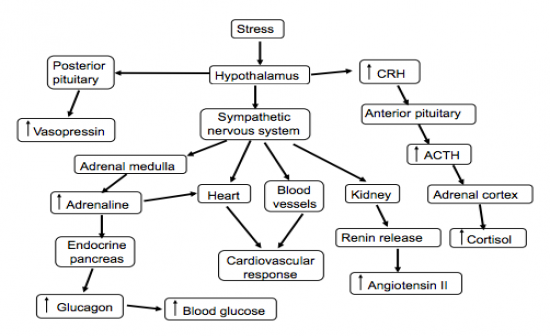 See image (needs more detail). |
|
Draw a flow diagram outlining the bodily reaction to increased cortisol release from the adrenal cortex.
|
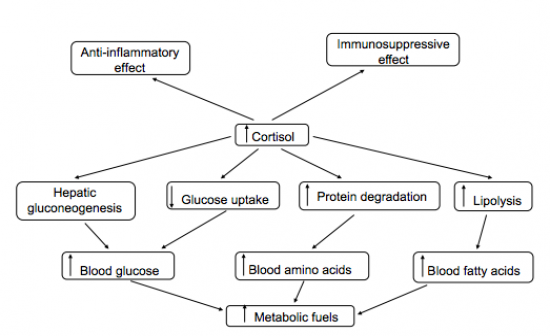 See Image. |
|
What is the bodys physiological response to sychological stress?
|
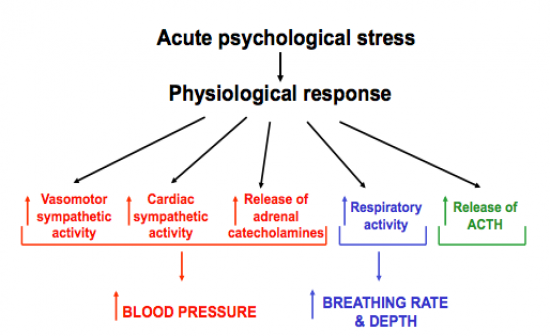 See Image. Response is very similar to cardiovasculatory responses which are evoked during exercise. Example of physiological response to psychological stress: Cardiovascular events in Munich during the World Cup (2006). |
|
How can environmental stress effect BP? Give example?
|
Study comparing lay women to nuns, showed lay women to have significantly higher blood pressure over a long period of time, blood pressure significantly increased with age. As for Nuns, blood pressure remained relatively stable. This study showed that environmental stress could have long term effects on BP.
|
|
Which main brain region generates the cardiovascular response to stress?
|
The Anterior cingulate cortex (ACC). Studies showed that lesions of the ACC prevent the cardiovascular responses to mental stress.
|
|
Which brain regions generate responses to stress?
Specifically what are the main responses of: - PVN - DMH - RP - VRG - SNA |
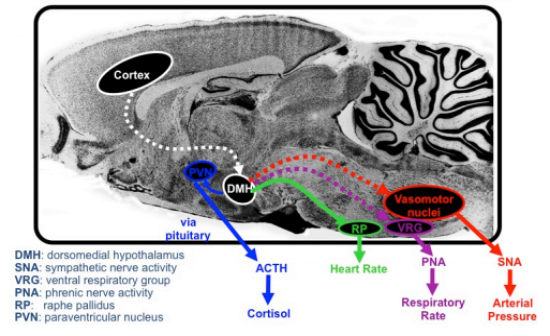 See Image. - VRG: affects major nerve (phrenic nerve) that controls the diaphragm hence controls the rate and depth of breathing. - RP: controls HR - PVN: regulates release of ACTH --> Cortisol, controlling sympathetic outflow. |
|
What evidence showed that the DMH is one of the key nuclei in triggering the physiological response to a stressor?
|
Study in mice, showed that inhibition of the DMH (using muscimol and agonist of GABA receptors) blocked the CV response to air jet stress, for both BP and HR.
|
|
Draw a:
i) Sympathetic autonomic neuron ii) Parasympathetic autonomic neuron |
Check book: Sympathetic has short pre and long post
Parasympathetic has long pre and short post - allowing the parasympathetic ganglia to be very close to the target organ. |
|
What factors account for the marked difference in cardiovascular responses to standing up and passive tilt?
|
In both cases change to upright position causes a shift of 500-1000mL of blood from thorax to lower part of th body (from above to below the hydrostatic indifference point)
The marked difference is due to the leg and abdominal muscle contractions involved in standing up which contribute to the muscle pump mechanically aiding in increasing blood flow back to the heart. This mechanism is not involved in passive tilt. |
|
Outline the physiological response to passive tilt.
|
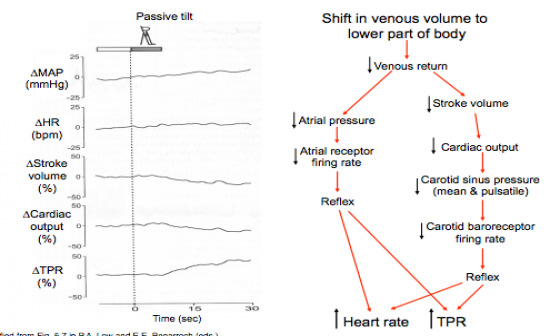 See image: - Baroreflex and atrial receptors cause an overall increase in HR and TPR. |
|
Outline the physiolohgical response to standing up.
|
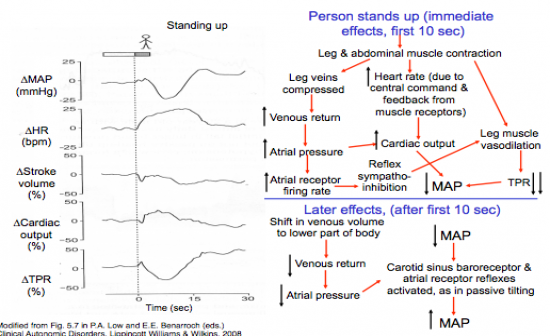 See image: Immediately (first 10 seconds): Leg and abdominal muscle contractio - muscle pump Later effects (after 10 seconds): Baroreceptor and atrial receptor reflexes as in passive tilting. |
|
What is microneurography?
|
Meaduring activity of a single nerve fibre to measure the overall level of sympathetic nerve activity.
|
|
Describe the response in HR and MAP after standing, if the carotid sinus was denervated?
|
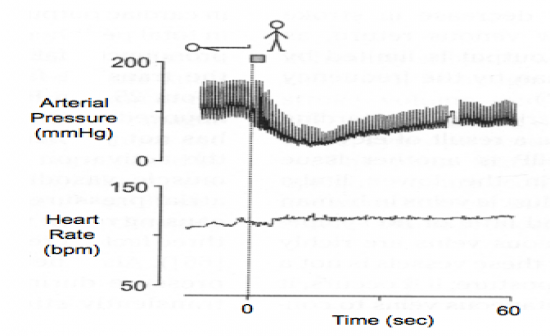 Compensatory response would still be present, but impaired. |



